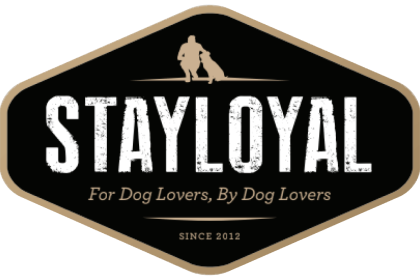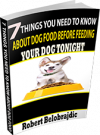Premium vs. True Premium: What Dog Owners Need to Know

Walk down any pet food aisle, and you'll see countless bags labelled "premium," "high-quality," or "superior nutrition." But does a premium label really mean you're getting the best for your dog? Not always. Many commercial dog food brands use the term "premium" as a marketing tactic rather than a reflection of superior nutrition.
So, how can you tell the difference between standard "premium" dog food and true premium nutrition? Let’s break it down.
The Illusion of "Premium"
Many dog food brands use the word "premium" to imply higher quality, but labelling regulations allow companies to use this term without meeting any strict nutritional or ingredient standards. In reality, many so-called premium brands rely on low-cost fillers, artificial preservatives, and lower-grade ingredients while charging a higher price.
Some common pitfalls of misleading "premium" dog foods:
- Fillers Instead of Nutrients: Many premium-labelled foods still use corn, wheat, and soy as primary ingredients. These fillers provide little nutritional value and can contribute to digestive issues and allergies.
- Meat By-Products Instead of Whole Proteins: Instead of real, named meat sources like chicken, beef, or fish, some brands use vague terms like "meat meal" or "poultry by-products." These ingredients may contain less digestible proteins and lower overall quality.
- Protein from Plant Sources Instead of Meat: Some brands inflate their protein content using plant-based sources like pea protein, lentils, and gluten, rather than deriving it from high-quality animal protein. While plant proteins can contribute to overall nutrition, they do not provide the same amino acid profile that dogs thrive on.
- Artificial Additives: Synthetic preservatives, artificial flavours, and food dyes are often used to make food last longer or look more appealing—but they provide no real benefit to your dog’s health.
- Lack of Transparency: Many brands use vague ingredient descriptions or proprietary blends to avoid revealing the actual quality of their ingredients.
What Makes True Premium Dog Food?
True premium dog food is formulated with quality, digestibility, and balanced nutrition as its top priorities. Here’s what sets it apart:
1. High-Quality, Named Animal Proteins
- The first ingredient should be a whole, named protein source like chicken, beef, salmon, or lamb.
- Avoid vague terms like "meat meal" or "animal by-products."
- Look for foods where the majority of the protein content comes from meat rather than plant-based sources like peas, lentils, or gluten-based proteins.
- Protein content should be at least 28% to meet the minimum standard for a true premium dog food.
2. No Cheap Fillers
- True premium brands avoid corn, wheat, and soy as primary ingredients, focusing instead on nutrient-dense whole foods.
- Look for wholesome carbohydrates like sweet potatoes, lentils, or brown rice for energy without excess fillers.
3. Healthy Fats and Omega Fatty Acids
- Sources like salmon oil and other marine-based omega-3s provide essential fatty acids for skin, coat, and brain health.
- Flaxseed is not an ideal omega-3 source for dogs, as they cannot efficiently convert ALA into DHA and EPA. Marine-based sources like fish oil are far superior for canine health.
4. Natural Preservatives and Nutrient-Rich Ingredients
- True premium foods use vitamin E, rosemary extract, or mixed tocopherols instead of synthetic chemicals like BHA and BHT.
- Added probiotics, prebiotics, and antioxidants support digestion, immune function, and overall wellness.
5. Transparent Ingredient Lists
- Trustworthy brands clearly list every ingredient and provide nutritional breakdowns so you know exactly what your dog is eating.
Why True Premium Dog Food Saves You Money
Investing in truly premium food may cost more upfront, but it can save you thousands in vet bills over your dog’s lifetime. A diet rich in high-quality ingredients helps prevent:
- Allergies and Skin Issues: Many dogs develop food sensitivities due to artificial additives or low-grade proteins.
- Digestive Problems: Poor-quality food can lead to chronic upset stomachs, bloating, and inconsistent stools.
- Obesity and Related Conditions: Over-processed, filler-heavy foods contribute to unnecessary weight gain, which can lead to arthritis, diabetes, and heart disease.
- Weakened Immune Systems: True premium foods provide the vitamins, minerals, and antioxidants that help keep your dog’s immune system strong.
How to Spot True Premium Dog Food
When evaluating a dog food brand, use this simple checklist:
- First ingredient is a whole, named meat source (e.g., chicken, beef, salmon).
- Majority of protein content comes from meat rather than plant-based sources like peas or lentils.
- Protein content is at least 28%.
- No fillers like corn, wheat, or soy.
- No artificial preservatives, colours, or flavours.
- Includes beneficial ingredients like probiotics, omega fatty acids, and antioxidants.
- Uses marine-based omega-3 sources instead of flaxseed.
- The company provides full transparency on ingredients and sourcing.
Conclusion: Choose Wisely, Invest in Health
Not all "premium" dog foods are created equal. By choosing a true premium dog food with high-quality ingredients and proven nutritional benefits, you're making an investment in your dog's long-term health and happiness. Don’t let marketing terms fool you—dig deeper into the ingredient list and nutritional value to ensure your dog is getting the best possible diet.
Because when it comes to your dog’s health, true quality is more than just a label—it’s a difference you can see and trust.








